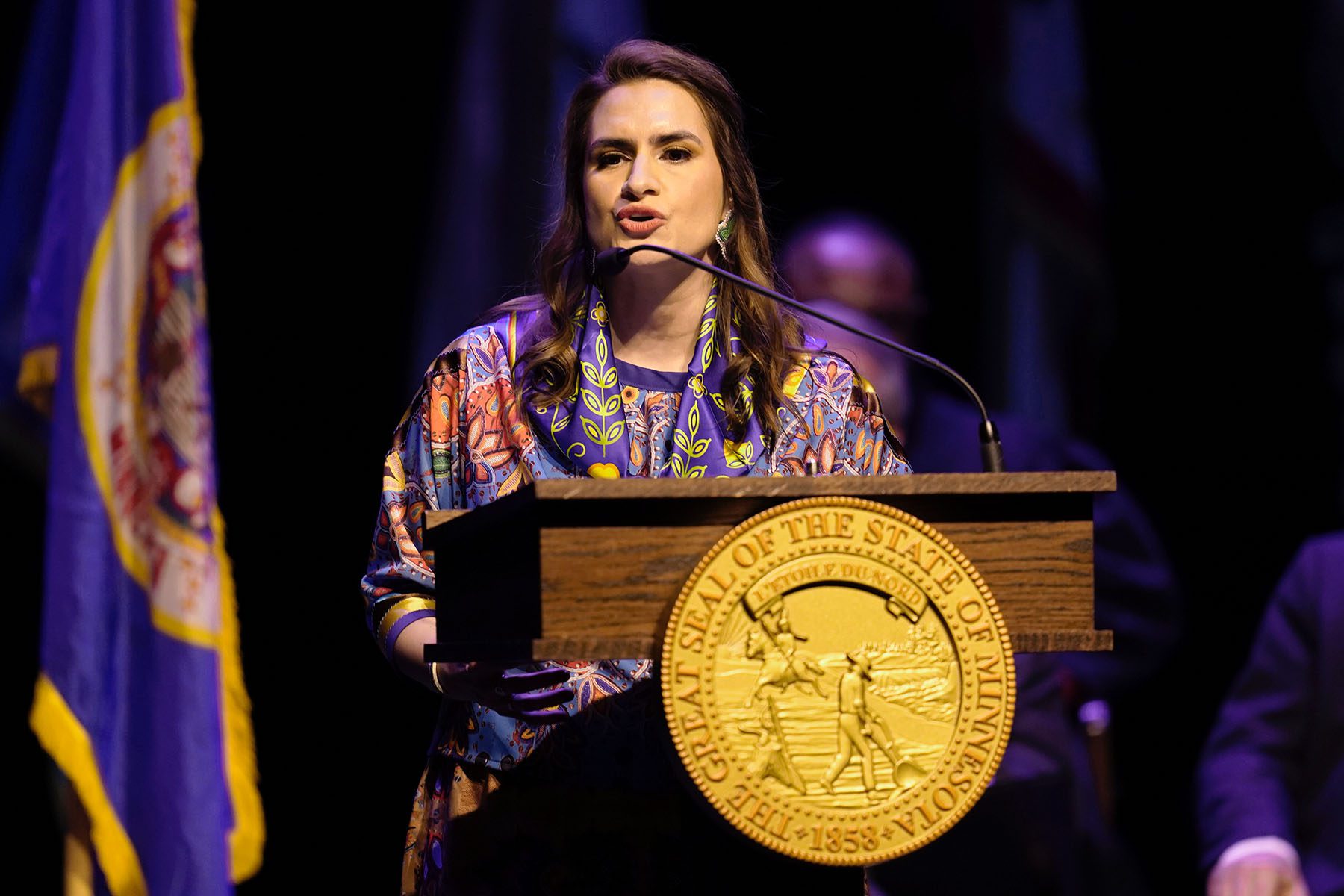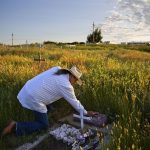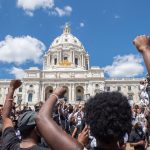Peggy Flanagan, Minnesota’s lieutenant governor, is proud of the pace at which her state has moved to address the harrowing crisis facing Indigenous people. Twenty years ago, when she worked as a community advocate, it was as though Indigenous people who went missing or faced violence were invisible, easily forgotten.
In the past four years, the state has turned new attention and resources toward the astounding rates at which its Indigenous people, particularly women and girls, go missing, face violence and are murdered. Attention from the legislature culminated with the creation of a first-in-the-nation office focused on the issue in 2021.
Less than two years since it began operating, the office, led by a Native woman, Juliet Rudie, is a key liaison for families navigating the complicated law enforcement system, and pushing for clear data to make sure victims aren’t invisible. It is also working to reshape the landscape that has allowed cases to fall through the cracks, including forging new training standards for Minnesota police officers. Every agency in the state has a tribal liaison.
Asked what accelerated the state’s attention to the issue, Flanagan was quick to respond: “Native women are now serving in office,” she said. “Native women are in decision-making roles and roles of authority.”
Flanagan, a member of the White Earth Band of Ojibwe, was elected to her office in 2018, becoming the highest-ranking Native woman elected to an executive office in the country. Before that election, Flanagan was part of a group of Native lawmakers who last decade boosted the representation of Native people in the legislature — from one to four — and helped create its first caucus dedicated to issues affecting Indigenous people.
Today, the state Senate has one Native woman senator, Mary Kelly Kunesh, and the state’s lower chamber has two Native women and one Native nonbinary representative: Heather Keeler, Jamie Becker-Finn, and Alicia Kozlowski. All are members of the Democratic-Farmer-Labor Party.
“It really matters who’s at the table, and who’s elected — we finally have Native representation in the governor’s office and Native women in the legislature,” Flanagan said.
Flanagan said that for many of the women serving in positions of power, the issue of violence against Indigenous women is personal. Flanagan experienced domestic violence growing up, and says the experience has been a driving force behind her advocacy work. Rudie has multiple family members who have been murdered or have gone missing without trace.
“We can speak for ourselves, and you have to actually look at people who are your colleagues who are serving. When we are at the table, the conversations change,” Flanagan said. She added that in the state’s Indigenous women leaders, victims may find some relief from the extractive nature of advocacy work.
“We know that our community doesn’t need to continually re-traumatize itself by telling these horrific stories in order to move policies and get investments that make our lives better. We shouldn’t have to do that anymore,” Flanagan said.
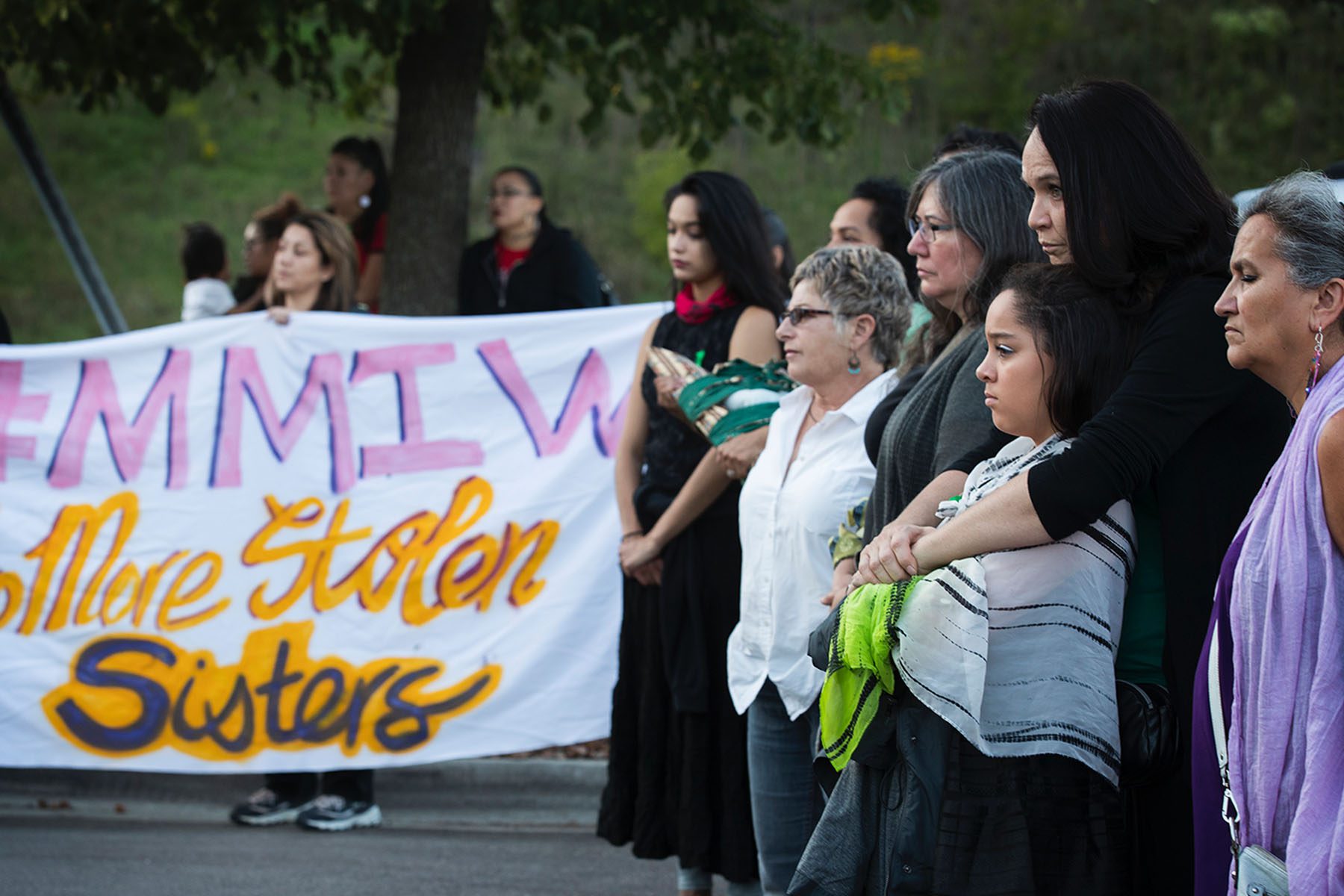
During Flanagan’s first year in the lieutenant governor’s office, state lawmakers created a task force with bipartisan support that would spend a year studying the crisis facing Indigenous people in Minnesota. What they delivered was a 163-page report that crystallized how the challenges facing Indigenous communities, like poverty and marginalization, make women and LGBTQ+ people vulnerable to violence, and how racism and lack of coordinated resources thwart justice and healing for victims.
It also provided a startling picture of the problem: While Indigenous women and girls make up just 1 percent of Minnesota’s population, they made up 8 percent of all murdered and missing women and girls in the state between 2010 and 2018.
In any given month from 2012 through 2020, 27 to 54 Indigenous women and girls were actively missing. Problems with how cases are reported and tracked, including the racial misidentification of Indigenous women, make these figures incomplete.
Patina Park, the former executive director of the Minnesota Indian Women’s Resource Center, who worked on the report, said it helped lawmakers and the broader public understand how, after Indigenous people go missing or are murdered, jurisdictional confusion and racism can delay justice.
Jurisdictional disputes sometimes stem from the fact that tribal law enforcement agencies have limited power over crimes committed against Indigenous people by non-Indigenous citizens. Other times, it’s confusion met by lack of law enforcement resources. Park said that if the body of a woman is found on a reservation, but there is some evidence to suggest she was murdered outside the reservation, or vice-versa, disputes will ensue about which agencies have to handle the case.
“You get finger-pointy as to who is responsible,” Park said. “Implicit bias and racism will also sneak in,” she said, adding that skepticism about the circumstances of a disappearance can impact how an agency or a news organization responds to a case.
“I find out people are missing on Facebook,” Park said. “There’s a 16-year-old right now missing in St. Paul. I haven’t seen that in the news. If a different teenager went missing in a different neighborhood, I suspect she would be in the news.”
Since her work on the task force, Park was named director of tribal liaison in the administration of Gov. Tim Walz.
The task force found the crisis so expansive and complicated that its first recommendation was that the state create an office to permanently work on the issue — and that any efforts include the participation of Indigenous women and girls, particularly those who’ve faced violence.
Notably, the Walz administration decided to give the new office a gender-neutral name to acknowledge violence against LGBTQ+ Indigenous people and against Indigenous boys and men. It is named the Office for Missing and Murdered Indigenous Relatives.
The office is now led by Rudie, a tribal member of the Lower Sioux Indian Community, who recently wrapped up her first year in the role. Rudie started as a team of one, and has worked to staff up an office with a hefty but pressing job.
“When I applied for the position, I read the report from the task force. I was upset and sad. I thought, I need to get out there and be a voice for Indigenous people in Minnesota,” Rudie said. One constant motivator, she said, is an aunt whose son has been missing since 2017.
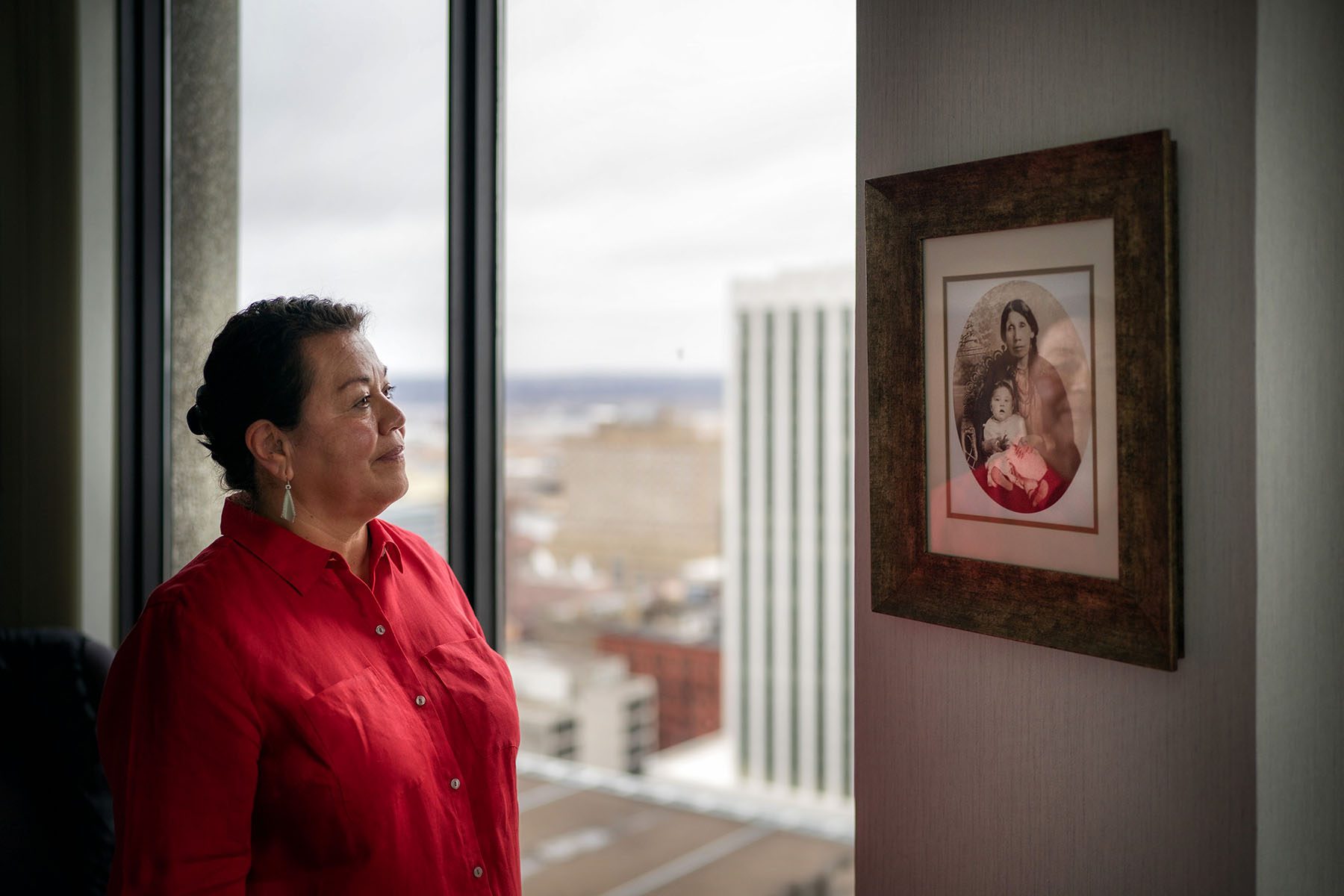
Rudie said that in her current position, she has the authority to advocate for policies that will make Indigenous people in the state less vulnerable and to fix problems with how cases are handled.
“When someone says, ‘why are you doing this?’ I look at the statue [that created my office]. This work is now the law.”
The office is now working on a protocol that will guide how cases of missing or murdered Indigenous people are reported, how local and state agencies will respond, and what services victims and families will receive. It will also include training for health care workers and first responders, and guidance for the press.
The office is also working on new training standards for incoming law enforcement officers, and advocating for wide-ranging access to law enforcement records to review how cases are handled and how data is reported.
“Oftentimes, law enforcement doesn’t get any training on the issue of [missing and murdered Indigenous people] or adequate training in responding in tribal communities, working in tribal nations,” said Nicole Matthews, the executive director of the Minnesota Indian Women’s Sexual Assault Coalition. “This work is about, how can we ensure that law enforcement is really getting the training they need to be successful in investigating these crimes?”
Critically, the office is a space for victims and relatives to find help and resources. Matthew said she is hopeful in the office’s work because it has sought to include input from victims and outside advocates.
“Certainly there’s a lot of a lot more work that we need to do, but I definitely see a lot of movement on this issue,” said Matthews, who has been in her role for two decades.
The office’s work over its first two years represents just the start of the job it was tasked with. But, Minnesota officials and advocates are hopeful in the never-before-seen levels of representation and visibility for Indigenous people in Minnesota.
The state’s Missing and Murdered Indigenous Relatives office unveiled its official logo this week, the work of an Indigenous design firm. It shows an Indigenous person with a red handprint over their mouth — a symbol of the movement throughout the United States and Canada. A teal braid represents sexual assault survivors. A red sun in the background represents a new day for Indigenous people.
Correction: An earlier version of this article misstated the names of one of the Native lawmakers in Minnesota's lower chamber.
